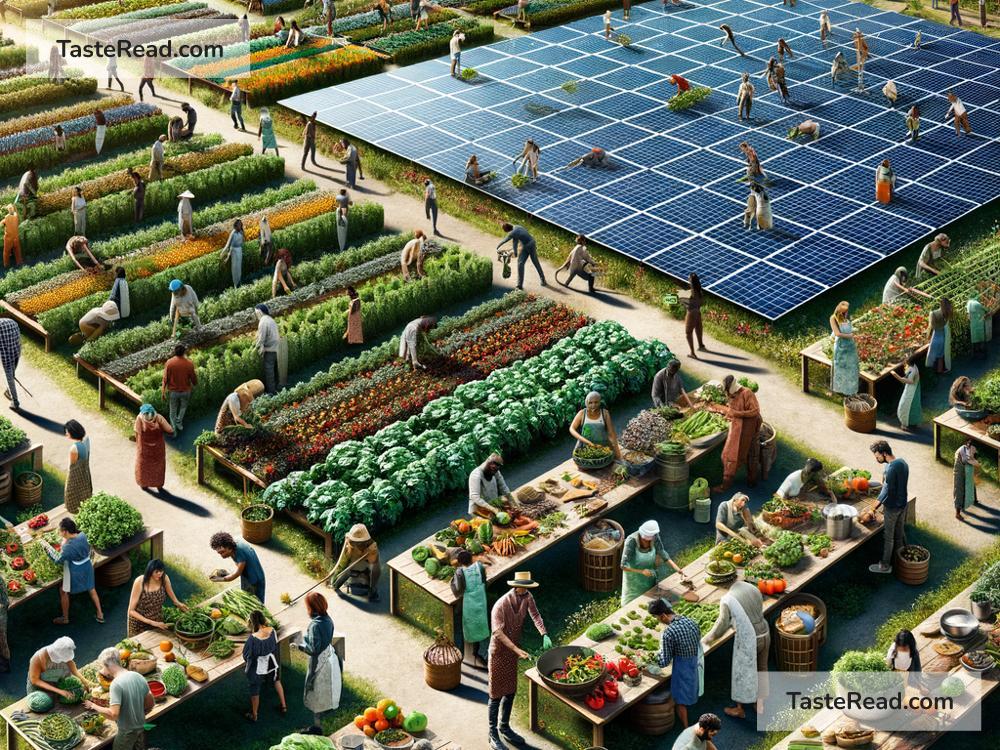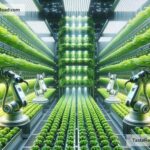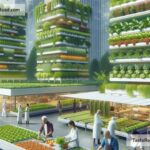The Future of Food and Holistic Community Development
In a world that’s constantly evolving, the way we think about food and communities needs to change too. Our choices today will shape tomorrow. From how we grow food to the ways communities work together, the future holds exciting possibilities. Let’s explore how food and holistic community development can come together to create a healthier, happier world for everyone.
The Changing Face of Food
Food is at the heart of life. It connects people, cultures, and traditions. But with climate change, a growing global population, and resource limitations, the way we produce and consume food needs to adapt.
In the future, food production may rely on innovation, such as vertical farming, lab-grown meats, and sustainable farming practices. Vertical farms, for example, grow food indoors in stacked layers using minimal water and space. This technology can help cities produce fresh food locally, reducing the need for transportation and preserving the environment.
Lab-grown meats could also be a key part of the future. These are made without raising animals. Scientists grow meat from cells in labs, creating a sustainable product with fewer greenhouse gas emissions. Such innovations can address ethical concerns and reduce the impact of traditional farming on the planet.
Of course, there’s always the option of returning to nature. More people are realizing the importance of organic farming to grow food without pesticides or chemicals. By going back to basics, communities can produce food that is healthier for both individuals and the environment.
What is Holistic Community Development?
Before we dive deeper, let’s explore what holistic community development means. “Holistic” refers to looking at the whole picture instead of focusing on just one part. Holistic community development doesn’t solve problems one at a time—it focuses on the overall well-being of people, their surroundings, and the systems that keep communities thriving.
This approach goes beyond building homes or improving infrastructure. It considers education, healthcare, mental health, food systems, environment, and social connections as parts of a bigger whole. When every aspect of life works together, communities become more stable, resilient, and able to tackle future challenges.
How Food Can Bring Communities Together
Food plays a major role in holistic community development. Healthy food systems can improve nutrition, reduce poverty, and support local economies. Community-focused food solutions also bring people together to share knowledge, traditions, and ideas. Let’s look at a few ways food can be a catalyst for change:
-
Urban Gardens and Community Farming:
In cities, urban gardens and community farms are becoming popular. These spaces allow people to grow their own fruits and vegetables right where they live. Families save money by growing food instead of buying it, and people who have never farmed before can learn new skills. Urban gardens also bring neighbors together, fostering connections and reducing loneliness in crowded city environments. -
Farm-to-Table Movement:
The farm-to-table movement is about eating food that comes directly from local farmers. Restaurants, markets, and even schools are adopting this approach to support small farmers and strengthen local food systems. When communities put their resources into local agriculture, they grow their economies and turn food into a shared responsibility. -
Food Education:
Teaching people about food is just as important as growing or buying it. Food education programs can help families understand the importance of nutrition, sustainable eating, and cooking at home. These programs are especially valuable for children. Imagine a future where every child knows how to plant a seed, cook a healthy meal, and understand where food comes from. That’s the future we can work toward. -
Celebrating Diversity Through Food:
Food brings people of different backgrounds together. By sharing meals and recipes, communities can learn about each other’s cultures and traditions. This can foster understanding and reduce division. A multicultural food festival, for example, can be a fun way to build bridges while celebrating diversity.
Food and the Environment: A Balanced Future
Holistic community development also means protecting the environment while meeting people’s needs. Food production is a major contributor to environmental damage, but we can change that. Sustainable farming practices, reducing food waste, and cutting down on single-use plastics are steps that everyone can take.
Food waste is a significant problem. Around one-third of all food produced globally goes to waste. Future communities can tackle this issue through better planning, storage, and redistribution of surplus food to those in need. Imagine a world where no one goes hungry and food waste becomes a thing of the past.
Working Together for a Better Future
When communities work together, amazing things can happen. Food can be a powerful tool to create connections, support livelihoods, and protect the planet. Holistic development means bringing farmers, educators, local businesses, and policymakers to the same table to discuss solutions.
Technology also has a role in shaping the future. Apps that connect farmers and consumers, data tools to track food production, and AI systems that predict food shortages are just some of the ways innovation can help.
The journey toward a better future starts with small steps. Planting gardens, supporting sustainable brands, participating in local events, or educating your community about food are things anyone can do.
A Bright Future Awaits
The future of food and holistic community development will depend on how well we cooperate with each other and the planet. Change takes time, but every action matters. Together, we can create a world where food is not just nourishment but also a source of connection, resilience, and hope. Holistic communities built around sustainable food systems are not just a dream—they are the foundation of a thriving future. Let’s get growing!


